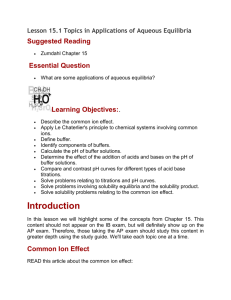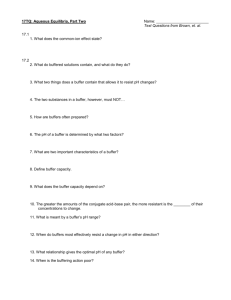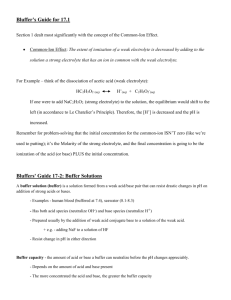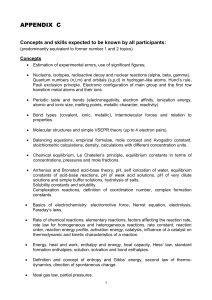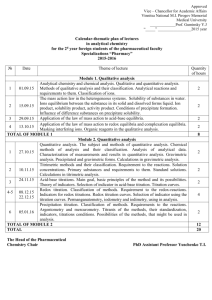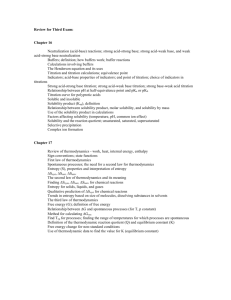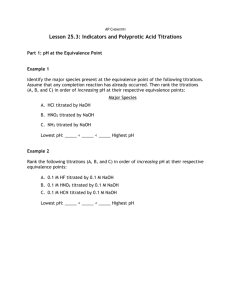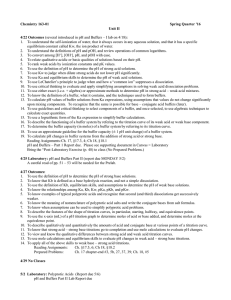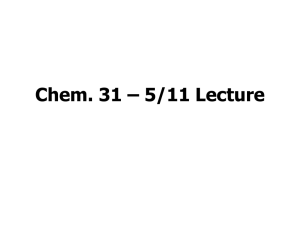Study Guide for Test 2
advertisement
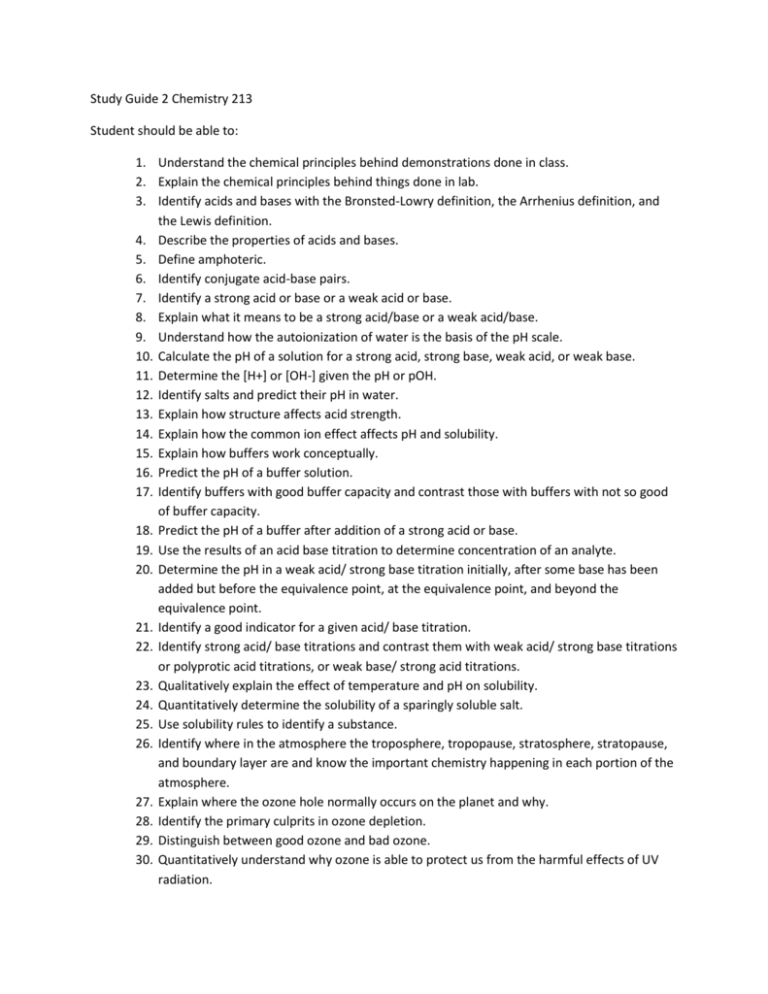
Study Guide 2 Chemistry 213 Student should be able to: 1. Understand the chemical principles behind demonstrations done in class. 2. Explain the chemical principles behind things done in lab. 3. Identify acids and bases with the Bronsted-Lowry definition, the Arrhenius definition, and the Lewis definition. 4. Describe the properties of acids and bases. 5. Define amphoteric. 6. Identify conjugate acid-base pairs. 7. Identify a strong acid or base or a weak acid or base. 8. Explain what it means to be a strong acid/base or a weak acid/base. 9. Understand how the autoionization of water is the basis of the pH scale. 10. Calculate the pH of a solution for a strong acid, strong base, weak acid, or weak base. 11. Determine the [H+] or [OH-] given the pH or pOH. 12. Identify salts and predict their pH in water. 13. Explain how structure affects acid strength. 14. Explain how the common ion effect affects pH and solubility. 15. Explain how buffers work conceptually. 16. Predict the pH of a buffer solution. 17. Identify buffers with good buffer capacity and contrast those with buffers with not so good of buffer capacity. 18. Predict the pH of a buffer after addition of a strong acid or base. 19. Use the results of an acid base titration to determine concentration of an analyte. 20. Determine the pH in a weak acid/ strong base titration initially, after some base has been added but before the equivalence point, at the equivalence point, and beyond the equivalence point. 21. Identify a good indicator for a given acid/ base titration. 22. Identify strong acid/ base titrations and contrast them with weak acid/ strong base titrations or polyprotic acid titrations, or weak base/ strong acid titrations. 23. Qualitatively explain the effect of temperature and pH on solubility. 24. Quantitatively determine the solubility of a sparingly soluble salt. 25. Use solubility rules to identify a substance. 26. Identify where in the atmosphere the troposphere, tropopause, stratosphere, stratopause, and boundary layer are and know the important chemistry happening in each portion of the atmosphere. 27. Explain where the ozone hole normally occurs on the planet and why. 28. Identify the primary culprits in ozone depletion. 29. Distinguish between good ozone and bad ozone. 30. Quantitatively understand why ozone is able to protect us from the harmful effects of UV radiation.
